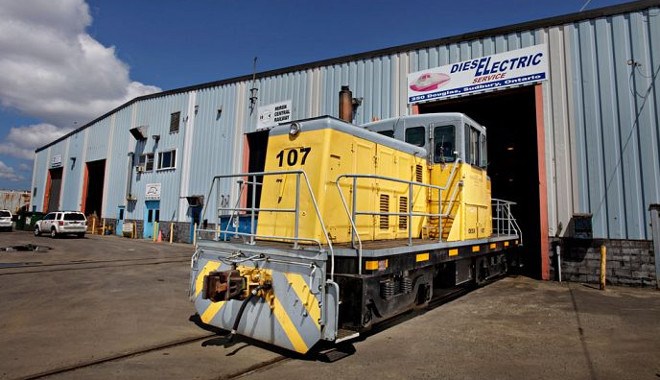crs1026
Superstar
I think this is true if one is talking about running 'The Canadian' or something similar, daily, on the current route.
But there are other more desirable services {potentially), servicing the same markets.
I would argue for a City-pair model (typically), with select intermediate stops.
Kenora-Thunder Bay; Thunder Bay-Sudbury (or Sault); Sault to North Bay, North Bay to Ottawa; Sudbury/NB to Toronto.
I'm not suggesting all of these are of equal or imminent priority, but that any business case for servicing this area would be based on this type of service, not a 'cruise ship' model.
Likewise, out west, Edmonton-Calgary; Regina-Saskatoon, Calgary-Banff, Calgary-Regina, Calgary-Lethbridge, Regina-Winnipeg etc. are where more reasonable potential exists.
I totally agree. Nobody really wants to drive the TCH in January.
Yes.....but............I would argue there was always an inherent onus on the freights not improve their model at the expense of passenger railway, which they did.
I would also argue they have not been pro-active in coming up with cost-effective solutions.
I would challenge this, on several grounds.
First, the railways have always cooperated with VIA becoming a standalone company with its own infrastructure. When VIA was formed, the railways did all the pax maintenance (in their own shops), provided operating and customer-facing staff, owned and maintained the stations, provided supervision and training, managed labour relations, funded pension and benefits, etc. All of these functions were transferred to VIA with the railways' agreement, including letting VIA run the trains with their own staff. There was originally a markup charged by the railways for doing this work, so this transition did cut into the railways' revenues.
Secondly, the funding model changed over the years, away from the "not at the expense of" proposition that you refer to. When VIA was formed, the costing model at that time treated passenger as just another line of business for the railways. Passenger trains had to support a share of railways' fixed costs and overheads. The (apt) joke at the time was that VIA was paying for x inches of CP's CEO's limousine.... if VIA was x% of the company's costs then it had to pay that % of the overheads. VIA successfully argued and negotiated away from that model towards a "strictly avoidable cost" model....the CEO was going to have a limousine with or without VIA, so VIA didn't owe CP anything for that. The implication in that change is that going forward, if the railways are carrying any assets by virtue of operating VIA, they are entitled to ROI on those assets. It is VIA who has extricated themselves wherever possible from using dedicated railway assets, thereby limiting its cost liability. If railways find better use for capacity or assets, VIA doesn't have claim to them.
I agree the railways have at times been excessively protective of their present and future capacity. The CTA award I cited earlier found that CP could not prove that running more VIA trains through the junction at Smiths Falls would delay CP freight. It's true that the railways may start a negotiation with a blanket "we can't manage that". The CTA award gives some optimism that there are levers to test this fairly, although they are embedded in a very legalistic process. The railways may be unwilling to negotiate because they figure they will always win in court. Perhaps that process ought to be made less legalistic and less provident to the railways.
We have to look at actual levers that matter to the railways rather than a general misconception that railways are anti-VIA. One has to assume, for instance, that Ontario is leveraging its support for the Halton Intermodal terminal to get CN willing to improve GO service, especially on the Halton line. You scratch my back, I will scratch yours.
Another good example is CP vs GO on the Milton line. People constantly mutter that the reason we don't have 2WAD is that CP is anti-GO. In fact, CP has entertained those trains for 40 years, and must recognize that there is absolutely no likelihood that anyone will ever cancel that service. CP is in that relationship for eternity. The relationship involves investment, and operational win-win... such as delivering the Davenport Diamond which clears the path for CP operations. Something as micro and mundane as agreeing to pay for installing a power switch and signalling at a particular location gets results.
There may have been times and places where CP/CN thought they could get VIA eliminated, but hopefully that too has passed. All VIA has to do is bring money.
The Stratford-Kitchener route is a further case study. There are real barriers to passenger in terms of the lack of sidings and operability. The track and crossings were in far worse shape than anyone would acknowledge. It's easy to look at a 1985 VIA timetable and say, hey just put things back to that standard.... but the current right of way simply does not permit that. It will have to be rebuilt, as GO is doing. By the way, freight operations on that line have turned into a cluster since GO bought the line and CN returned. CN has actually been pretty flexible and cooperative with GO, to its own detriment.
Other lines (Toronto-North Bay - Sudbury-Sault and North Bay- Timmins, and lines on the prairies, and the Maritimes) that are of interest to us in this forum have similar challenges. Just threatening the railways won't overcome these. Again, the issue is whether VIA can bring the money needed to install signalling, bring track speed back up to historical standards, build stations, and restore sidings and industrial trackage to protect freight capacity. If the money is there, I'm optimistic that the railways will at least come to the table
- Paul
Last edited:






/https://www.thepeterboroughexaminer.com/content/dam/thepeterboroughexaminer/news/peterborough-region/2019/12/17/via-rail-high-frequency-passenger-service-a-high-priority-for-feds/B88982357Z.1_20191217151218_000_G7JR3UF7.3-0_Gallery.jpg)
